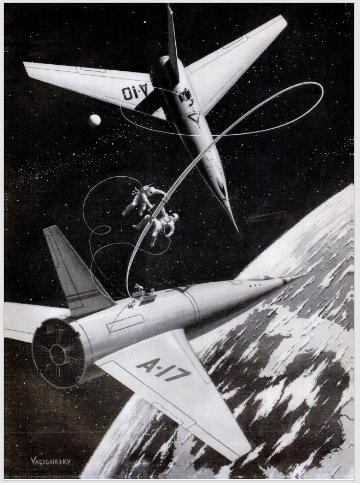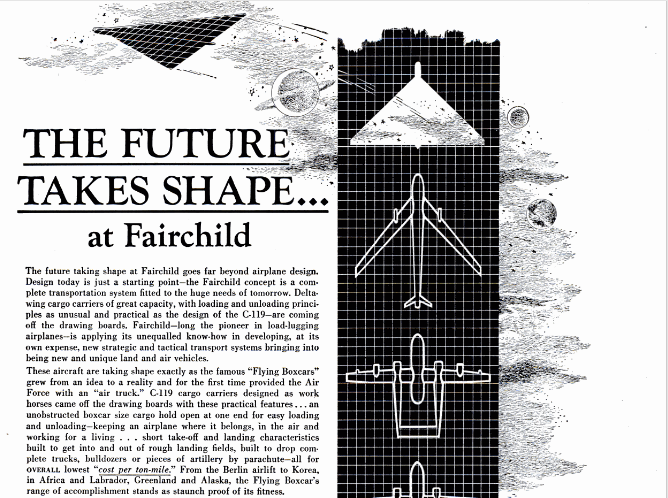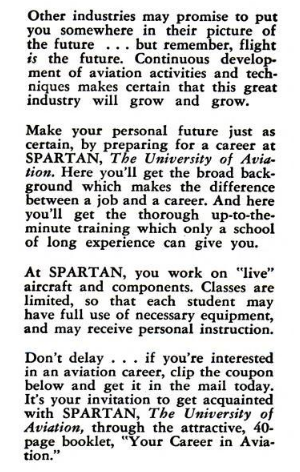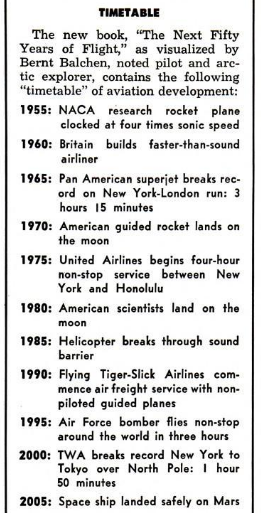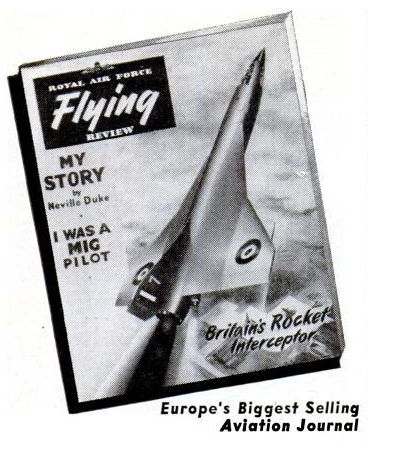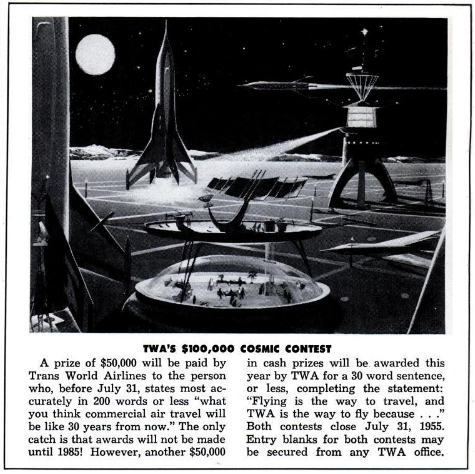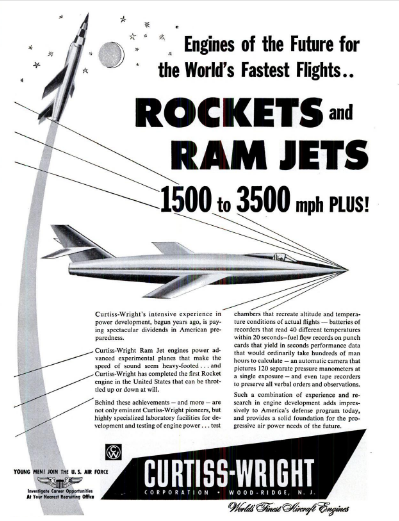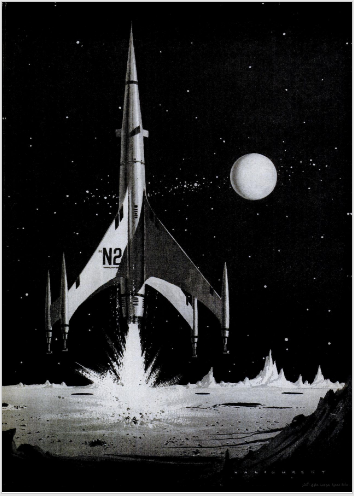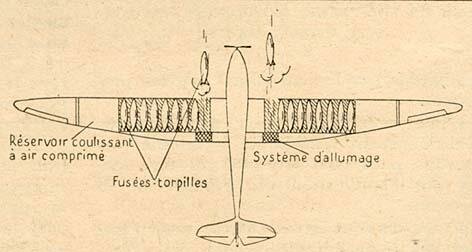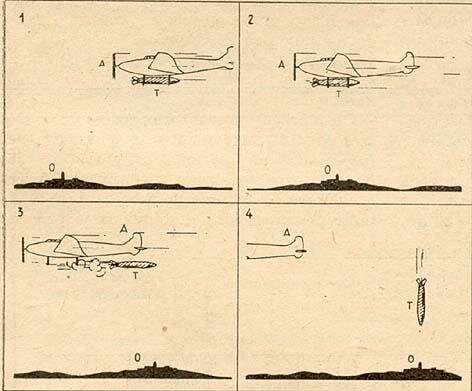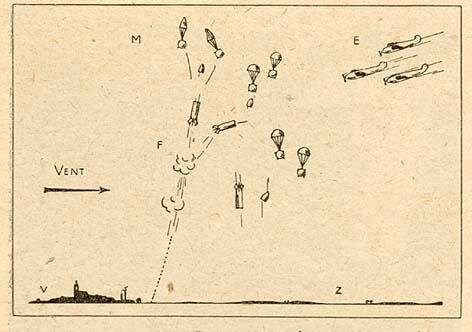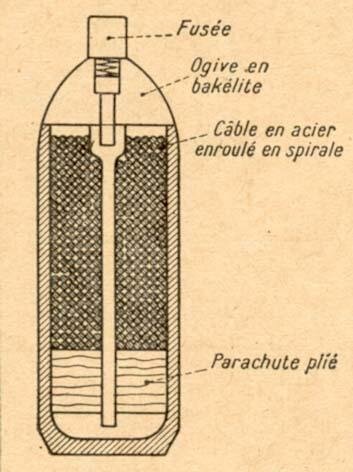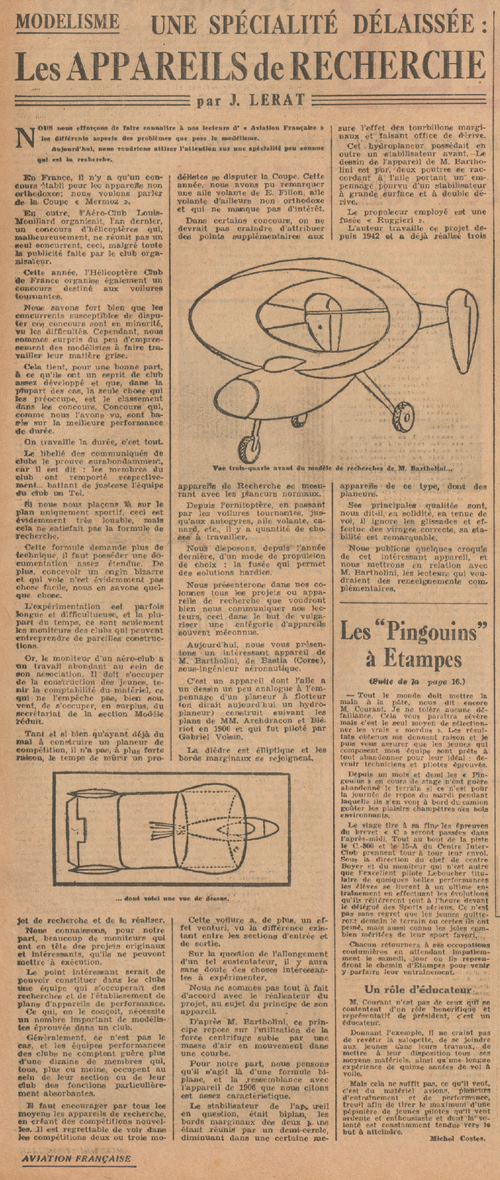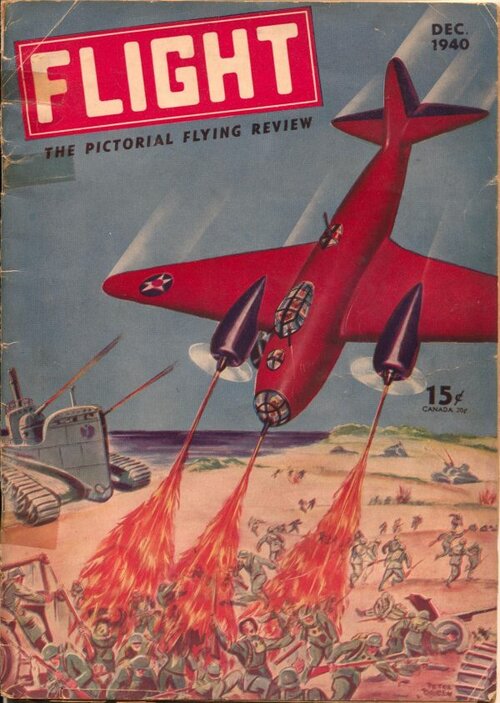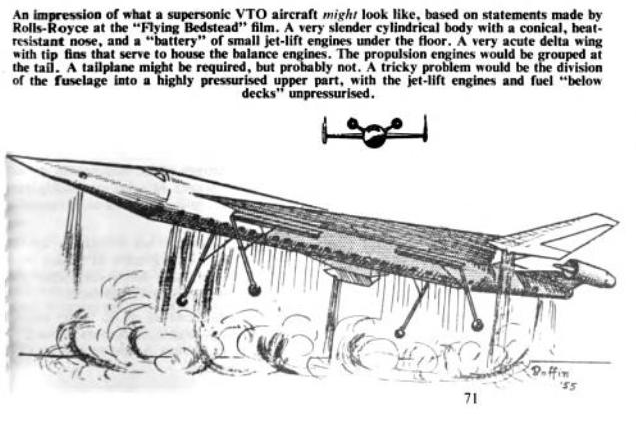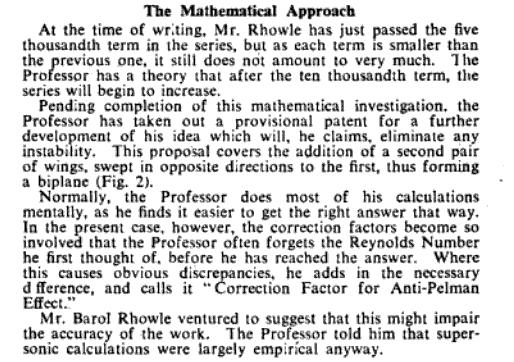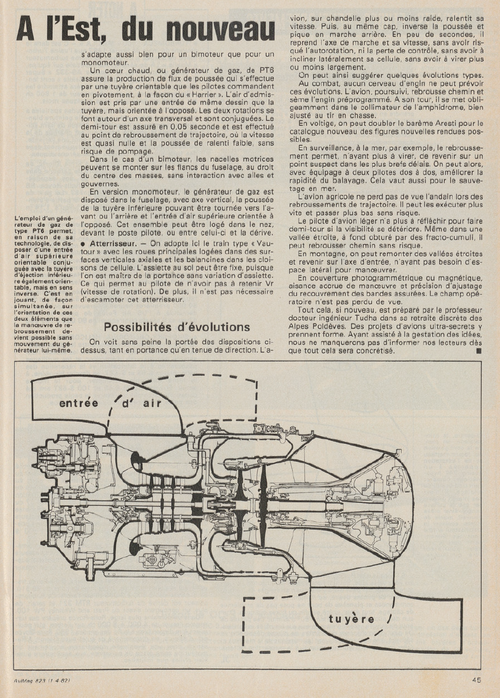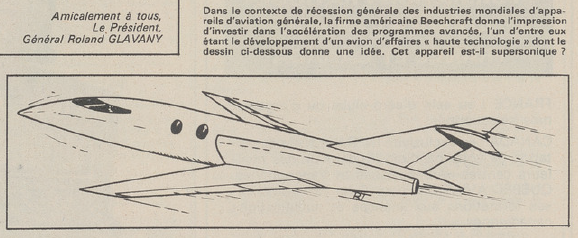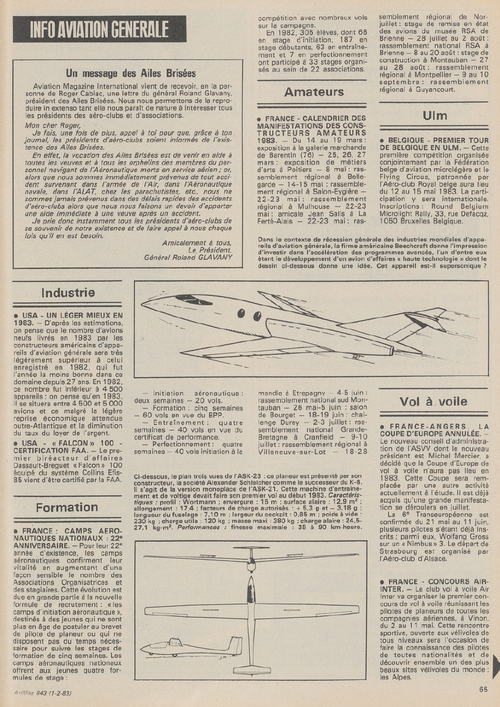You are using an out of date browser. It may not display this or other websites correctly.
You should upgrade or use an alternative browser.
You should upgrade or use an alternative browser.
Aviation, Imagination of the Future from the Past
- Thread starter hesham
- Start date
- Joined
- 9 October 2009
- Messages
- 21,927
- Reaction score
- 13,533
Was the 1985 prize money ever paid out I wonder?
- Joined
- 9 October 2009
- Messages
- 21,927
- Reaction score
- 13,533
A 10,000-Ton Aircraft from the Future of 1934
JF Ptak Science Books Quick Post Hugo Gernsback--(1884-1967) the very busily creative pioneer in science fiction, author, and editor of some of the finest sci fi, pre-sci fi, and pop science journals from the 'teens into the 1940's—though big and...
longstreet.typepad.com
(h/t richard.)
- Joined
- 9 October 2009
- Messages
- 21,927
- Reaction score
- 13,533
- Joined
- 26 May 2006
- Messages
- 34,789
- Reaction score
- 15,676
Hi,From Aviation Francaise 1945,
here is a two strange ideas,from Mr. Max Cosyus and Mr. Ananoff ?.
Attachments
Hi,From Aviation Francaise 1945,
here is a two strange ideas,from Mr. Max Cosyus and Mr. Ananoff ?.
Using a steel cable suspended under a parachute as an antiaircraft weapon was actually a pretty common idea from the 1930s up through the early years of WW1.The Royal Navy's Unrotated Projectile used rockets to launch the cable/parachute and attached a small aerial mine to the end of the cable. The idea was that the airplane would snag the cable and the drag from the parachute would pull the mine up to airplane.
- Joined
- 9 October 2009
- Messages
- 21,927
- Reaction score
- 13,533
- Joined
- 11 March 2012
- Messages
- 3,244
- Reaction score
- 3,170
Sort of like the commuter railways in the basements of International Airports serving Frankfurt and Geneva.
Charlesferdinand
amateur theologian
- Joined
- 24 October 2013
- Messages
- 172
- Reaction score
- 272
- Joined
- 11 March 2012
- Messages
- 3,244
- Reaction score
- 3,170
I have sketched a motor-kannon firing through a single-row radial engine. The goal was to build a light-weight fighter circa - 1940 - powered by a Wright R-1820 radial engine with 9 air-cooled cylinders.A very impressive vision of future war in 1940, with amphibious warships and aircraft with flame throwers.
Anyone who can route a flamethrower through the hub of a radial engne, has my deepest respect.
martinbayer
ACCESS: Top Secret
- Joined
- 6 January 2009
- Messages
- 3,341
- Reaction score
- 3,809
Blowback, anyone?A very impressive vision of future war in 1940, with amphibious warships and aircraft with flame throwers.
Anyone who can route a flamethrower through the hub of a radial engne, has my deepest respect.
Charlesferdinand
amateur theologian
- Joined
- 24 October 2013
- Messages
- 172
- Reaction score
- 272
I think the artist only had a vague idea about how propellers work. Or flamethrowers, for that matter.Blowback, anyone?A very impressive vision of future war in 1940, with amphibious warships and aircraft with flame throwers.
Anyone who can route a flamethrower through the hub of a radial engne, has my deepest respect.
martinbayer
ACCESS: Top Secret
- Joined
- 6 January 2009
- Messages
- 3,341
- Reaction score
- 3,809
Frankly, if you can route a 20 mm cannon through a propeller shaft a la Bf 109, a flame thrower should be a lead pipe cinch, so to speak. The question of the wisdom of such a design still remains open though.A very impressive vision of future war in 1940, with amphibious warships and aircraft with flame throwers.
Anyone who can route a flamethrower through the hub of a radial engne, has my deepest respect.
martinbayer
ACCESS: Top Secret
- Joined
- 6 January 2009
- Messages
- 3,341
- Reaction score
- 3,809
Afterthought - the most challenging part of the design would probably be the ignition - somewhat akin to trying to light a candle in a hurricane/tornado, but modern ramjet/scramjet technology should offer a viable solution...
- Joined
- 11 March 2012
- Messages
- 3,244
- Reaction score
- 3,170
Note that guns only fire through the propeller speed reduction unit on Bf.109, Yaks and Moraines.Frankly, if you can route a 20 mm cannon through a propeller shaft a la Bf 109, a flame thrower should be a lead pipe cinch, so to speak. The question of the wisdom of such a design still remains open though.A very impressive vision of future war in 1940, with amphibious warships and aircraft with flame throwers.
Anyone who can route a flamethrower through the hub of a radial engne, has my deepest respect.
The Me.109 had an inverted V Mercedes-Benz 605 engine with the cannon laying between the two cylinder banks. The PSRU hung down below level of the crankshaft so that the cannon only had to fire through the PSRU. This explains why Messerschmitts had a lower thrust line than most other single-engined fighters.
Russian and French fighters used up-right V engines again with the cannon laying between the two cylinder banks. Their PSRU was above the level of the crankshaft, so again, the cannon only fired through the PSRU. Russian Klimov engines were license-built and derived from a Hispano-Suiza pattern.
How fast (meters per second) do ground-pounding flame-throwers throw their flames?
Last edited:
- Joined
- 9 October 2009
- Messages
- 21,927
- Reaction score
- 13,533
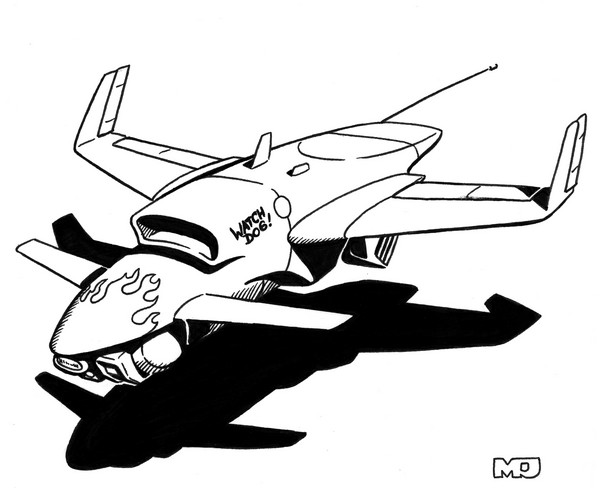
On a cyberpunk theme. 'Watchdog' drone from the Shadowrun universe. Via the Deviantart account of the original concept artist.
- Joined
- 26 May 2006
- Messages
- 34,789
- Reaction score
- 15,676
My dear Grey,that's not suitable for this forum or topic.View attachment 684966
On a cyberpunk theme. 'Watchdog' drone from the Shadowrun universe. Via the Deviantart account of the original concept artist.
- Joined
- 9 October 2009
- Messages
- 21,927
- Reaction score
- 13,533
Well, Shadowrun did predict a lot of the uses of drones and related technologies that are common today.
- Joined
- 9 October 2009
- Messages
- 21,927
- Reaction score
- 13,533
- Joined
- 9 October 2009
- Messages
- 21,927
- Reaction score
- 13,533
- Joined
- 26 May 2006
- Messages
- 34,789
- Reaction score
- 15,676
martinbayer
ACCESS: Top Secret
- Joined
- 6 January 2009
- Messages
- 3,341
- Reaction score
- 3,809
Seems inspired by this: https://www.secretprojects.co.uk/threads/messerschmitt-courier-turbojet-fighter-project.4226/From Aeroplane magazine 1947,
Mr. Rhowle and his concept.
Last edited:
richard B
ACCESS: Secret
- Joined
- 17 August 2006
- Messages
- 343
- Reaction score
- 498
Aviation Magazine FIRST APRIL 1982 !From Aviation magazine 1982,
it's not displayed in real development and project section,so I think
it was fake,but not sure ?.
- Joined
- 9 October 2009
- Messages
- 21,927
- Reaction score
- 13,533
We have mentioned the Manhattan Airport previously, here's another crazy project in a similar vein, the Thames River airport from 1934:


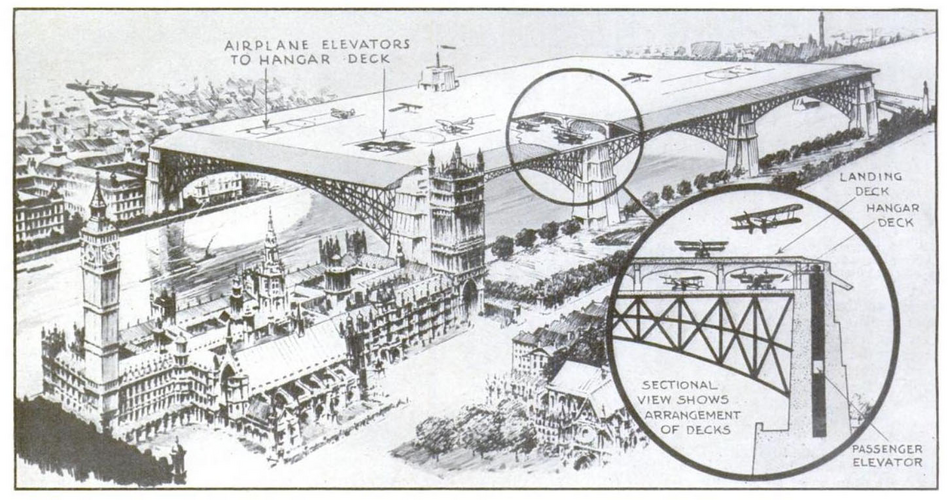

Unbuilt London: The Thames Airport
No not that one, the other one. No, not that one either, the other one. Yes, this one -- the giant airport right in the centre of London on the Thames, next to Parliament.
www.ianvisits.co.uk
- Joined
- 19 October 2012
- Messages
- 1,980
- Reaction score
- 1,931
In 1943 the UK began to think seriously about post-war commercial aviation, the most reported being the Brabazon Committee and moves to negotiate the framework for global airline operations. The options for a new airport to serve London also came under scrutiny. A location east of London that would include a lagoon for flying boats was suggested, one version, drawn by Guy Morgan and Partners, championed by Fred Miles, was shown in Flight 29th July 1943. By 1946 that had been formalised, in competition with Brian Colquhoun and Partners and maybe others.


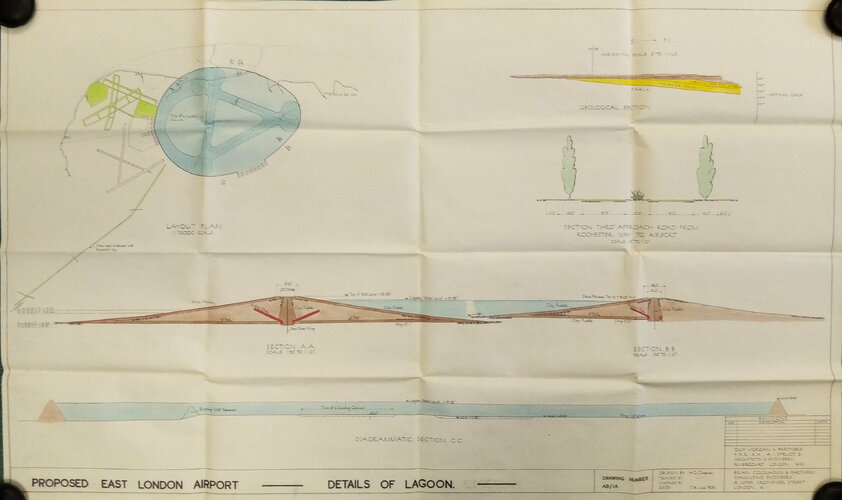
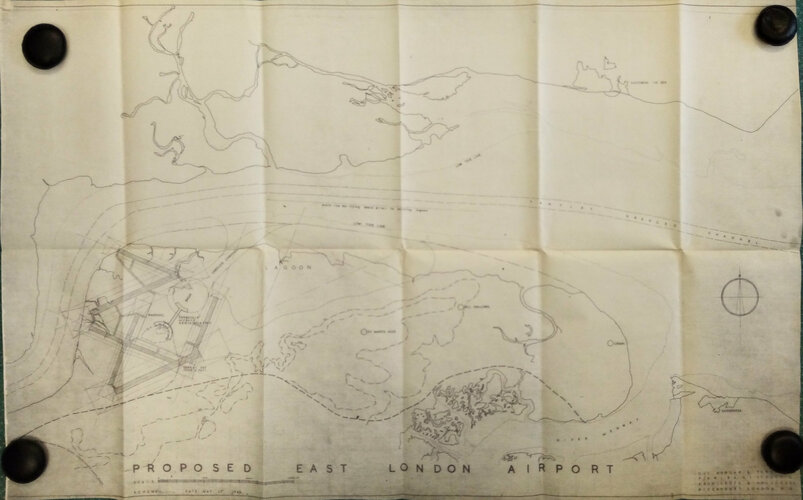
- Joined
- 6 September 2006
- Messages
- 4,824
- Reaction score
- 9,408
There was a similar 1946 proposal for Morecambe Bay in Lancashire for transatlantic airliners and flying boats by building a giant causeway with runways and pools for flying boats with express rail routes to Manchester. I came across it in an old Flight but alas can't find it again.
- Joined
- 19 October 2012
- Messages
- 1,980
- Reaction score
- 1,931
Interesting, I'll have to track that down.There was a similar 1946 proposal for Morecambe Bay in Lancashire for transatlantic airliners and flying boats by building a giant causeway with runways and pools for flying boats with express rail routes to Manchester. I came across it in an old Flight but alas can't find it again.
Also a scheme for Prestwick
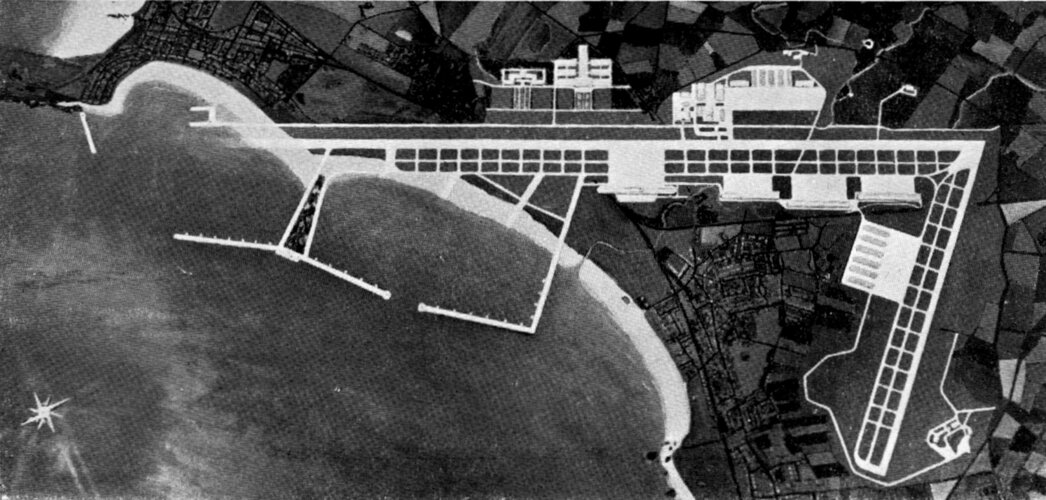
Nik
ACCESS: Top Secret
- Joined
- 15 July 2009
- Messages
- 1,263
- Reaction score
- 1,058
Morecambe Bay barrage Would have lent itself to tidal power, plus a convenient crossing...
IIRC, there's now so much low-lying, 'at risk' land beside and behind that estuary, much reclaimed from salt-marsh that, given estimated sea-level rise, the locals need either a near-fractal sea-wall or a much, much shorter barrage. Again, providing a convenient road / tram-way link...
Now, perhaps with row of bird-friendly vertical axis wind-generators...
IIRC, there's now so much low-lying, 'at risk' land beside and behind that estuary, much reclaimed from salt-marsh that, given estimated sea-level rise, the locals need either a near-fractal sea-wall or a much, much shorter barrage. Again, providing a convenient road / tram-way link...
Now, perhaps with row of bird-friendly vertical axis wind-generators...
Similar threads
-
-
Strange Hypothetical Man-Powered Aircraft of 1955
- Started by hesham
- Replies: 0
-
-
Armstrong Whitworth AW.167 Transport Airliner Project
- Started by hesham
- Replies: 13
-

